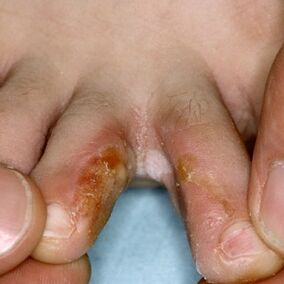
Symptoms of fungus between toes
Diagnosis of interdigital fungus
treat
- Local;
- anti-inflammatory (drug;
- Antibacterial;
- Systemic.
topical treatment
Before using ointments and creams, it is necessary to prepare the feet - wash them thoroughly with antibacterial soap and dry them.
anti-inflammatory treatment
Treatment of bacterial infections
Treat fungus with tablet system
These drugs are strictly prescribed by medical experts for serious indications. They have limitations because their use can produce side effects such as dysbiosis, dyspepsia, and impaired kidney and liver function. The course of systemic treatment prescribed by your doctor cannot be interrupted without good reason. Interruption of treatment may lead to the development of resistance to a variety of drugs, mainly antibiotics.

folk remedies
kombucha treatment
Propolis Tincture

celandine juice
foot bath
Prevent fungus between toes on feet
- Follow personal hygiene rules. Washing your feet with antibacterial soap every day can help prevent excessive sweating. To prevent your feet from being burned, avoid wearing tight, uncomfortable shoes. Shoes need to be disinfected from time to time;
- Special shoes must be worn when visiting public saunas, baths, and swimming pools;
- Keep the bathroom clean by regularly disinfecting with cleaning products and hot water;
- Personal hygiene items (towels and sponges) should be treated regularly with disinfectant. Never use someone else’s towels and sponges;
- Monitor the condition of your feet. For care, use special creams containing ingredients that prevent the occurrence of fungal infections.
















